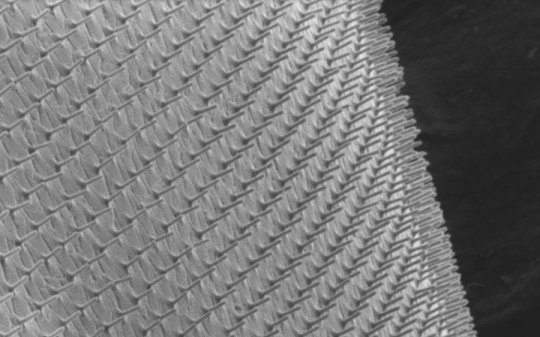Purdue University researchers have developed a new flexible and translucent base for silicon nanoneedle patches to deliver exact doses of biomolecules directly into cells and expand observational opportunities. “This means that eight or nine silicon nanoneedles can be injected into a single cell without significantly damaging a cell. So we can use these nanoneedles to deliver biomolecules into cells or even tissues with minimal invasiveness,” said Chi Hwan Lee, an assistant professor in Purdue University’s Weldon School of Biomedical Engineering and School of Mechanical Engineering. A surgeon performs surgery on…
Read MoreCategory: Skincare
New device could help minimize scarring in cosmetic surgery
Researchers at Binghamton University, State University of New York have developed a new device that could help minimize scarring during surgery. The device can ascertain the orientation of skin tension lines, which is important for wound-healing post-surgery. Human skin is a complex tissue that exhibits properties that arise primarily from the alignment of collagen fibers in the dermis layer of the skin, ultimately causing skin tension lines. These lines are vital for surgery, as they are used to guide incisions that produce the least conspicuous scars. While there are many…
Read MoreSevere eczema may best be treated by allergy shots
If you’ve suffered with severe atopic dermatitis (eczema) for a long time and have tried what you think is every available option for relief, you may want to consider allergy shots. A medically-challenging case being presented at the American College of Allergy, Asthma and Immunology (ACAAI) Annual Scientific Meeting found that allergy shots provided significant benefits to the eczema symptoms suffered by a 48-year-old man. “The man had suffered with severe eczema since childhood,” says allergist Anil Nanda, MD, ACAAI member and lead author of the paper. “He had tried…
Read MoreMore effective hydrogel for healing wounds
Researchers at the University of New Hampshire have created an easy-to-make, low-cost injectable hydrogel that could help wounds heal faster, especially for patients with compromised health issues. Wound healing can be complex and challenging, especially when a patient has other health obstacles that seriously impede the process. Often injectable hydrogels are applied to irregular shaped wounds, like diabetic ulcers, to help form a temporary matrix, or structure, to keep the wound stable while cells rejuvenate. The caveat is that current hydrogels are not porous enough and do not allow neighboring…
Read MoreA common genetic signature has been discovered among three cancer prone rare skin diseases
Through a global gene expression analysis (transcriptomic), the researchers were able to find and confirm a genetic signature common to these genodermatoses in patients’ cells. The profile targets cellular activation and alteration of the dermal microenvironment (lower layer of the skin) which could favour the progression of the disease, as well as skin cancer. Recessive dystrophic epidermolisis bullosa and the Kindler syndrome are diseases that cause fragility of the skin, caused by mutations in essential genes to attach the two layers of the skin. Patients with these diseases suffer from…
Read More
